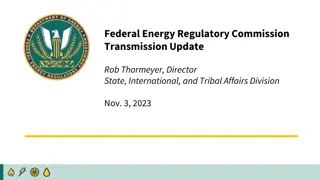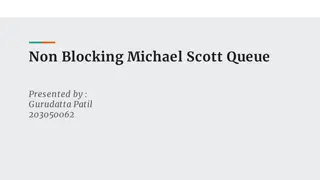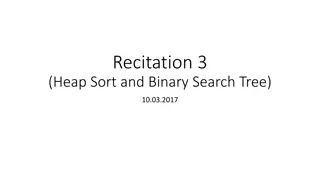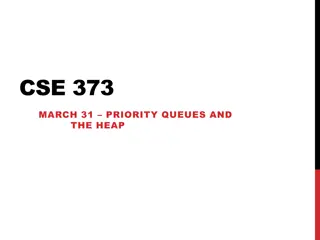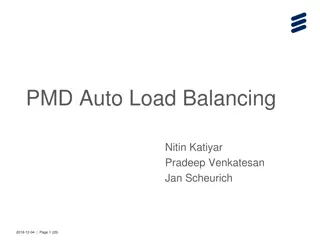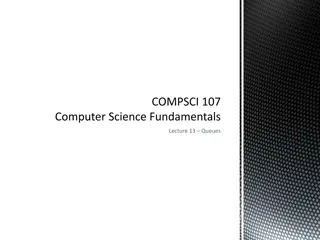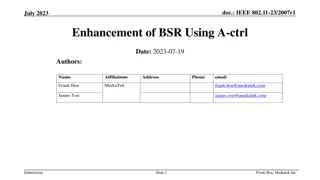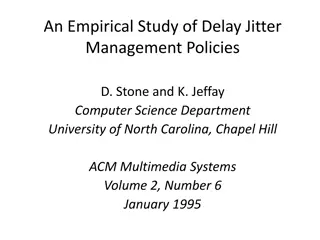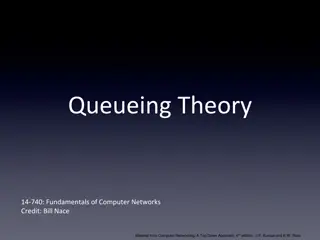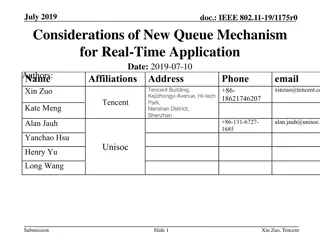
Telephone Line Problem and Erlang Formula Analysis
Explore the M/G/1 Queue system, analyze the Telephone Line Problem with considerations for blocking probability and Erlang formula, discussing the average number of calls in progress and more. Understand the design elements and calculations behind managing outgoing telephone lines effectively.
Download Presentation

Please find below an Image/Link to download the presentation.
The content on the website is provided AS IS for your information and personal use only. It may not be sold, licensed, or shared on other websites without obtaining consent from the author. If you encounter any issues during the download, it is possible that the publisher has removed the file from their server.
You are allowed to download the files provided on this website for personal or commercial use, subject to the condition that they are used lawfully. All files are the property of their respective owners.
The content on the website is provided AS IS for your information and personal use only. It may not be sold, licensed, or shared on other websites without obtaining consent from the author.
E N D
Presentation Transcript
The M/G/1 Queue and others
Telephone Line Problem Callers queue for outgoing lines This system will allow only eight outgoing connections
Telephone Line Problem The outgoing telephone lines could be physical, as in the original version, or virtual, as in ATM, and the decision of the CAC function would decide the number of connections available This is modeled as a M/M/N/N queue (N servers, no waiting room)
Telephone Line Problem The arrival process is simple Poisson If there are n < N customers in the queue, then they are all being serviced The service rate for a single line is (average duration of phone call = 1/ ) So the service rate for the whole queue is n for 0 < n N
Telephone Line Problem As before, the average flow between states must be zero npn = n+1pn+1 This gives us pn = (n+1) pn+1 or p n 1 + for 0 < n N = p + 1 n n where = /
Telephone Line Problem n This gives us = p p 0n n ! Since we also require pn = 1, we also get = n n 0 1 = p 0 n N !
Telephone Line Problem The designer of the system is interested in the blocking probability This is simply the probability that n = N, or pN = n N = P B n N ! N ! n 0
Erlang Formula The formula on the last slide is called the Erlang-B distribution after the pioneering Danish engineer, AK Erlang He has given his name to the units we use for traffic intensity, which corresponds to
Telephone Line Problem The average number of calls in progress is E ( n N N np = = = = 0 ) n np n ! n 0 1 n n 1 n N = = p 0 ( 1 )! n 1 n n N N = = p 0 ! ! n N 0 n ( ) = 1 P B
Telephone Line Problem We would generally expect to be designing systems where PB is low, so E(n) The average number of calls put through per unit time, is N N p = = = = 1 = ( ) n p E n n n n 0 0 n n ( ) = P B
Design Problem You have 1,000 incoming telephone lines, and over an eight hour period, each subscriber makes four phone calls, on the average. The phone calls average five minutes in length. How many outgoing lines must you provide to give a blocking probability of (a) 10% (b) 1%? How many calls would be in progress on the average?
Design Problem = 1000x4/(8x60) = 8.33 calls per minute = 1/5 = 0.2 calls per minute = / = 8.33/0.2 = 41.67 Blocking probability N = P B n N = n ! N ! n 0
Design Problem After a spreadsheet calculation, we find that we need at least 43 servers to give less than a 10% chance of blocking, and at least 55 servers to give less than a 1% chance of blocking The corresponding calls in progress is 37.7 for 43 servers and 41.3 for 55 servers
M/G/1 Queue A memoryless, Poisson process always gives an exponential distribution for inter-arrival or inter-service times However there are cases where the service process times are not exponentially distributed For example
M/G/1 Queue For example, a packet switching system may handle only two different types of packet, one with 100 bytes, and one with 2,000 bytes The big packets will take longer to serve (transmit) This gives a dumbell distribution
M/G/1 Queue F(t) Service time, t The service times of the small packets would cluster around a low value, and there would be a cluster at a longer time for the larger packets
M/G/1 Queue Another example would be a server (computer) which has to perform different operations on packets, depending on what type of packet it is Possible operations are encrypting, processing for an on-line game, and simple transmission
M/G/1 Queue And another example would be within an ATM switch, where all packets (or cells ) are the same size, and thus take the same time to transmit In these cases, the service time distribution is said to be general , and we describe the queue as M/G/1
M/G/1 Queue Service time, customer j time tj-1 tj tj+1 nj-1 nj nj+1 Packet j is completed at time, tj The number of packets in the queue at time tj+ is nj
M/G/1 Queue During servicing of customer j, a number of packets, j, arrives Then the number of packets in the queue after servicing of packet j is nj = nj-1 -1 + j nj = j for nj-1 > 0 for nj-1 = 0
M/G/1 Queue These equations can be written using a unit step function nj = nj-1 u(nj-1) + j u(x) = 1 for x 1 = 0 for x 0 The expected values of nj and nj-1 are the same where
M/G/1 Queue So we must have E( ) = E(u(n)) The average value of arrivals, E( ) must be less than unity for a stable queue, and in fact, must be equal to the utilisation, , by definition,
M/G/1 Queue Then we have by definition ( ) ( = E E ) ( ) 0 = n = = ( ) u n p P n n 1 Therefore we have p0 = 1 as before (M/M/1)
M/G/1 Queue For the next proof, we need some intermediate results or definitions Firstly, the definition of the variance of is ( ( ) ( ) ( ) = E ) ( ) = = = + 2 2 2 2 ( ) 2 E E ( ) + + 2 2 2 E E = 2 2 2 2 E 2 2
M/G/1 Queue Secondly, E(u2(n)) = E(u(n)) = E( ) = Thirdly, we assume that j and nj-1 are independent, so that E( jnj-1) = E( j)E(nj-1) = E(nj-1) We begin the proof with the equation relating nj and nj-1 nj = nj-1 u(nj-1) + j
M/G/1 Queue We square both sides of the equation nj2 = nj-12 + u2(nj-1) + j2 2nj-1u(nj-1) 2u(nj-1) j + 2 jnj-1 We now take the expected value of both sides + E( 2) 2E(n) 2 2 + 2 E(n) = 0 We now substitute for E( 2)
M/G/1 Queue 2E(n) (1 ) = - 2 2 + 2 + 2 = (1 ) + 2 This finally gives us = n E 2 + ( ) 2 1 ( 2 )
Expected service time The average service time is E( ), so the average service rate is 1/E( ) The utilisation, , is the ratio of average arrival rate to average service rate So = E( ) That is E( ) = /
Queue Size To find E(n), we still need to find 2 We will need a result from the distribution of service times, 2 2 = E[( / )2] = E( 2 2 / + 2/ 2) = E( 2) 2 / x / + 2/ 2 So E( 2) = 2 + 2/ 2
Queue Size (find 2) ( E k E )) ( ( = ) ( ) = = 2 2 2 ( ) E k = ( = 2 ( ) ) k P k 0 k = = ( = ( 2 ( ) | ) ) k P k f d 0 0 k = ( k ) e = k + ( 2 2 ( 2 ) ) k f d ! k 0 0 k
Queue Size (find 2) We reverse the order of summation and integration ( k k ) ( ) ( 2 ) ) 1 + + ( 2 k ( 2 ) k k k k ! = = ( 2 ) e f d 0 0 k ( k ( k 2 1 k k k ( ) ( ) = = = = + 2 + ( 2 2 1 ( ) ) e f d 2 )! 1 )! ! 0 1 0 k k k ( ) = ( + 2 + ( 2 2 ) 1 ( ) ) f d 0
Queue Size (find 2) = + + 2 2 2 2 ( ) 1 ( 2 ) ( ) E E 2 = + + + 2 2 2 1 ( 2 ) 2 = + 2 2
Queue Size We can now substitute back into the formula for E(n), defining = / We get = 1 2 2 ( ) 1 1 ( ) E n 2 This formula gives expected queue size in terms of server statistics
Queue Size This formula collapses to /(1- ) for the exponential service distribution If we know exactly what the service time will be (eg for ATM cells at a switch), then 2 = 0 and n E 1 = ( ) 1 2
Queue Size This is called a deterministic service time, and the queue is then M/D/1 This gives the lowest possible average queue The higher the value of 2, the longer the average queue will be The term 1/(1- ) dominates for high
Time Delay Average time delay can be found using Little s formula, so that E(T) = E(n)/
Problem Three queuing systems, with Poisson arrivals, are alike, except that the servicing distributions are (a) Poisson (b) deterministic and (c) composed of 50% with a service time of 0.1, and 50% with a service time of 1.0. Compare the average queue levels for all cases when = 0.5
Problem For case (c) the average service time is 1.1/2 = 0.55. So = 1.81818 2 = 0.5(0.1 0.55)2 + 0.5(1.0 0.55)2 = 0.2025 From the formula E(n)=(0.5/0.5)(1 0.25(1-1.82x0.2025)) = 1.083
Problem For case (a) E(n) = 0.5/0.5 = 1 For case (b) E(n) = 0.5/0.5x(1-0.5/2) = 0.75 The distribution of case (c) gives a high variance, and this results in a larger average queue

